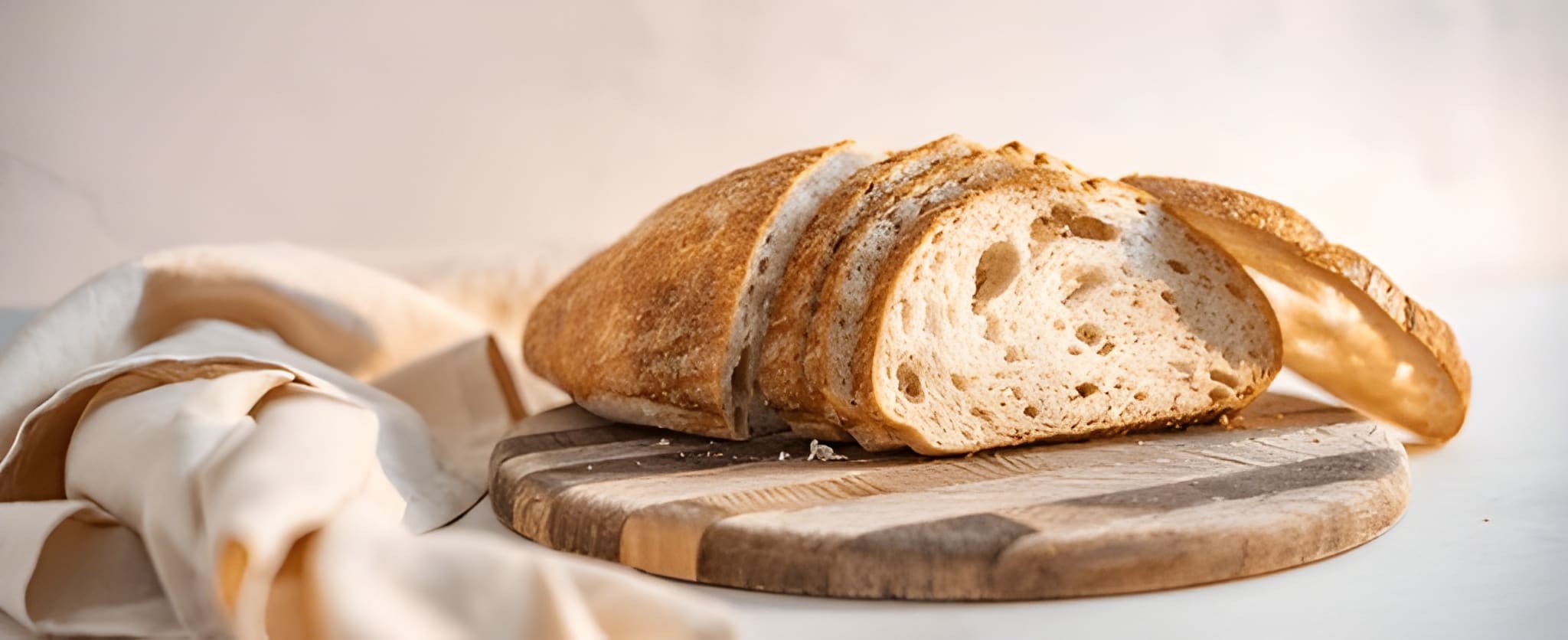Fermentation Sourdough Bread is a traditional, naturally leavened bread that relies on wild yeast and lactic acid bacteria — not commercial yeast — to rise. This process develops a complex flavor, chewy texture, and a crisp golden crust that makes sourdough unique. The slow fermentation process not only enhances the taste but also improves digestibility and nutritional value.

Fermentation Sourdough Bread:
Unlike regular bread, sourdough requires patience and time. The fermentation allows beneficial bacteria to break down gluten and phytic acid, producing a loaf that is both flavorful and easier on the stomach. Whether baked in a rustic round or an artisan-style batard, this bread captures the essence of old-world baking with modern home-kitchen simplicity.
History:
The origins of sourdough fermentation go back over 5,000 years, to ancient Egypt, where wild yeast was first used to leaven bread naturally. For centuries, sourdough was the only form of leavened bread before commercial yeast was introduced in the 19th century. Each region developed its own version — from San Francisco’s famous tangy sourdough to Europe’s dense rye-based loaves.
Subscribe to our youtube channel Kitchenpedia for more delicious recipes and hit the like button if you enjoyed this youtubevideo. Share it with your friends and Family.
Fermentation Sourdough Bread
Ingredients
- 500 g bread flour (or a mix of bread and whole wheat flour)
- 350 g water (room temperature)
- 100 g active sourdough starter (fed and bubbly)
- 10 g salt
Instructions
- Feed the starter: Refresh your sourdough starter 4–6 hours before baking until bubbly and doubled.
- Mix: In a large bowl, combine the starter and water. Stir in flour until no dry spots remain. Cover and rest for 30 minutes (autolyse).
- Add salt: Sprinkle salt and mix with wet hands until incorporated.
- Bulk fermentation: Let the dough ferment at room temperature for 4–6 hours, stretching and folding it every 30–45 minutes during the first 2 hours.
- Shape: Turn the dough onto a floured surface, shape into a round or oval, and place in a floured proofing basket.
- Cold proof: Cover and refrigerate overnight (8–12 hours) to develop flavor.
- Preheat oven: Heat oven to 475°F (245°C) with a Dutch oven inside.
- Bake: Score the dough, transfer it carefully to the preheated pot, cover, and bake for 25 minutes covered, then 20 minutes uncovered until golden brown.
- Cool: Let the bread cool completely before slicing to preserve the crumb.
Notes
- Use an active, fed starter for the best rise and flavour.
- Longer fermentation equals tangier flavor and better texture.
- Always allow the bread to cool fully before slicing — it continues cooking internally.
- Store in a paper bag or wrapped in a tea towel, not plastic, to keep the crust crisp.
- Use leftover sourdough for croutons, breadcrumbs, or French toast.
Tips forn Fermentation Sourdough:
- Control fermentation temperature — warmer temps speed it up; cooler slows it down.
- Use a kitchen scale for precise measurements.
- Practice proper folding techniques to strengthen gluten naturally.
- Bake with steam (in a Dutch oven) for a crusty, blistered exterior.
- Refresh your starter regularly to maintain strength and flavour.
FAQ’s for Sourdough Bread:
Q: What is sourdough fermentation?
It’s the natural process where wild yeast and bacteria break down sugars in flour, producing carbon dioxide and acids that make the dough rise and develop flavor.
Q: Why does sourdough taste sour?
The tangy taste comes from lactic and acetic acids formed during long fermentation.
Q: Can I use whole wheat flour?
Yes, mix 20–50% whole wheat for extra nutrition and a deeper flavor.
Q: How long can sourdough last?
It stays fresh for 3–4 days at room temperature and can be frozen for up to 3 months.
Q: Why didn’t my bread rise?
Your starter may be weak or underfed, or the dough may have overproofed. Ensure your starter is bubbly before mixing.
Conclusion:
Fermentation Sourdough Bread is a timeless expression of slow, mindful baking. Each loaf tells a story of patience, science, and flavor — with every bubble, fold, and rise revealing the art of natural fermentation. It’s not just bread; it’s a living tradition that connects us to ancient bakers and the pure joy of handmade food. The tangy taste, chewy texture, and crisp crust make it an enduring favorite for artisan bread lovers everywhere.

